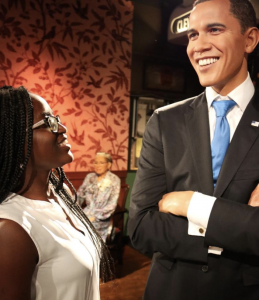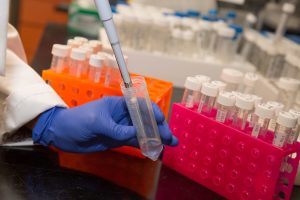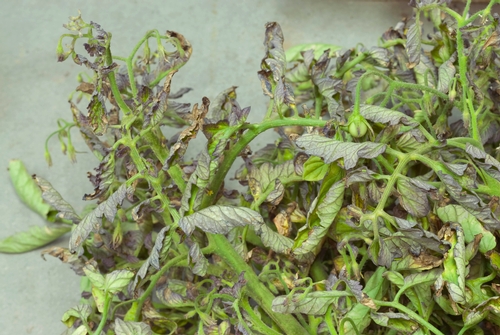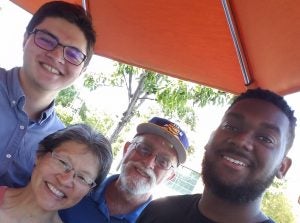Zebrafish, urchins, #44, and more: Adebola’s summer
It was also amazing having UMES professor Dr. Tracy Bell visit to learn some new techniques in the Draper Lab. She’s focusing on the zebrafish kidney and got to do some in-situ hybridization while she was here.
The research has been incredible, and I have enjoyed both working in an incredible lab and exploring Davis. I was able to learn how to ride a bike in just three days and this has been an amazing skill to learn. MCBGAP and EEGAP students also took a field trip to the UC Davis Bodega Marine Laboratory, which was both fun-filled and educational. I got to hold a sea star and sea urchin in my hands. I have also been able to explore different food cuisines and tea shops. I also went down to San Francisco to see the amazing Golden Gate Bridge and visit the Wax Museum which was an incredible experience.
Most importantly, I have appreciated the knowledge I have acquired from my research, the awesome networking I have had during this time with other students and faculty and many of the professional development seminars in the program.
I would like to thank the MCBGAP program coordinators, Dr. Hom, Dr. Sean Burgees and Ms. Brenda who have been helpful all through this program. I will also like to thank Dr. Draper, my graduate mentor, Yulong Liu and every member of the Draper lab for all the great research that they are doing and for the amazing learning experience I received.
Thanks to the UC Davis community for an amazing summer experience!




Mari’s whirlwind summer
These last seven weeks have definitely been some to remember!
It seems as if just yesterday I was just flying into Sacramento, and now I am on my last week in Davis. UC Davis as well as all of the other UC’s are very well known for their research findings and their state of the art research facilities. It was an honor to be given the opportunity of a research internship at this university.



In addition, I built many friendships with other HBCU students from all over the country. We have become sort of like a family. We spend most of our free time during the week together, and every weekend with them has been an adventure. We literally made a trip out of almost every weekend that we spent here in California. We have travelled to Sacramento, San Francisco, Oakland, Vallejo, etc. We have tried out many different restaurants, gone to movies, explored different parties and clubs, and even went to the California State Fair.
I can’t forget the GAP program administration who made sure our weeks were never dull and empty. All of the activities, panels, discussions, and organized recreational activities that they planned for us really made this entire trip complete. I learned so much from professionals on how to improve my own skills to get into any graduate school that I desire. They helped us get a jumpstart on the different application materials and have provided beneficial feedback which is amazing.
This program was everything that I could have asked for and more. All of my experiences, both in and outside of the lab, I will forever be grateful for.
Jada’s lab (…and other…) shenanigans
My task this summer involved two related projects. First, I did what is called a knockdown experiment. In this experiment, I sever the foot of the hydra, then I inject SiRNA’s from different transcription factors, and finally, I give the hydra a low voltage electrical shock in hopes that the hydra will take up the RNA’s to create transgenic hydra. Ultimately we want to be able to determine which genes are required for proper regeneration. Thus, my second experiment involves 5 different genes: Jun, Fos, CEBP, CR3L and XPB1. With these 5 genes we hope to successfully clone each to further understand how regeneration is performed.
Besides lab shenanigans, I have been able to experience many cool aspects of Northern California.
- On one Tuesday, we visited the Bodega Marine Lab where I learned about an endangered (and apparently, very delicious) species called white abalone. We took a hike through the preserve and saw some amazing views of the coast.
- I’ve gone to the Davis Farmer’s Market, which has the best blackberries ever.
- I spent a Saturday at Six Flags Discovery Kingdom where I rode every rollercoaster there and saw an amazing dolphin show. A few of us traveled up to Sacramento and went to the California State Fair. There, I ate the biggest turkey leg of my life and lost at every game attempted.
- Perhaps my favorite adventure was going to San Francisco. There I drove over the Golden Gate Bridge, visited Fisherman’s Wharf and went to Chinatown. When the sun began to set, we drove through Golden Gate Park until we reached the beach and admired the view from the sand.
Besides these adventures, I enjoy spending time with my fellow program mates whether it be riding our bikes or just watching TV in the Kearney Hall lobby.




Trahmad and tomato virus research


Caylen’s microscope-eye view on her week at UC Davis
A week in the life of a scientist: Imade Ojo
Last week included a group field trip in addition to a copious amount of lab work. On Tuesday, Imade and other students took a trip to the Bodega Marine Laboratory. They had a lot of fun learning about endangered white abalone and the research being done to restore the species. While at BML, they also took toured the surrounding preserve and observed the diverse natural landscapes characteristic of the Sonoma coast.
The rest of Imade’s week was filled with lab work aaannnnddd….bioinformatics! For the lab work, Imade is isolating microbes from serpentine and non-sepertine soil samples to compare and analyze the microbial communities. And she rapidly is adding lots of things to her bioinformatic toolbox. She is finishing up work with Mothur, which is an open source software package used for analysis of DNA. She later will analyze output from this tool with other software — PICRUSt, a program used to characterize evolutionary relationships, and STAMP, which researchers use to analyze metabolic profiles — to predict metagenomes from 16S RNA data generated from soil collection completed in 2016.



So far, Imade has enjoyed her time in the lab and looks forward to learning more from Dr. Vannette and Allie.
Streptanthus and Lauren and abalone, oh my!

Alumni update: Kevin Wickham
Keep in touch with us, Kevin!

Cycle city, USA!
Davis has been declared the safest city in the US for cyclists, as featured in a recent tweet by Chancellor Gary May. Our 2018 scholars have experienced Davis cycling for themselves since arrival, scooting around campus and town, as they dust off rusty cycling skills.

A check-in from Demario
MCBGAP and FAMU junior Demario Chappell is learning how to handle mice, UNIX, and R scripting in the Lasalle lab…and it’s only been one week!



